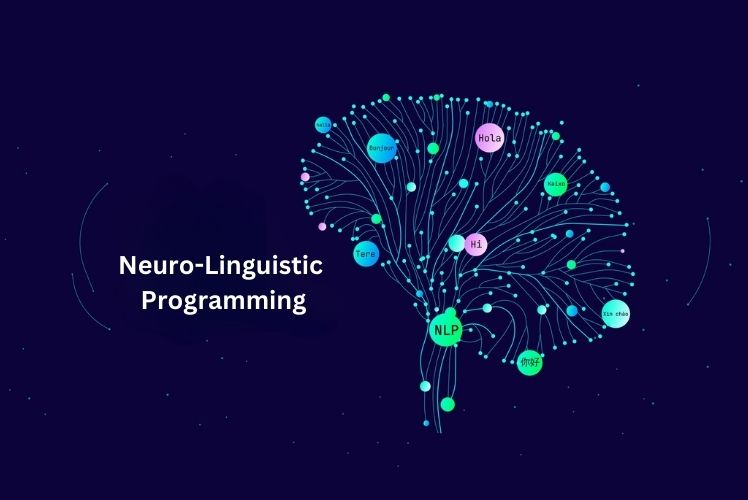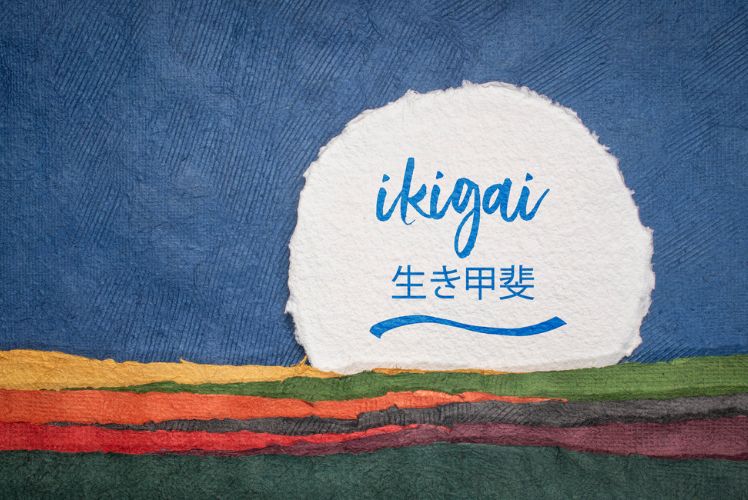Understanding how personality traits shape our decisions can offer profound insights into our lives. Introverts and extroverts approach life differently, impacting their choices in friendships, work, and leisure activities. While introverts may seek quiet, reflective environments, extroverts often thrive in bustling social settings. Recognising these differences helps us appreciate the diverse ways we engage with the world around us.

In navigating personal relationships, introverts tend to value deep connections with a few close friends, while extroverts often benefit from a broader social network. This dynamic can influence everything from how we spend our weekends to our career paths. Moreover, ambiverts, who fall between these two extremes, might adapt their behaviour depending on the situation, making their choices equally fascinating.
Ultimately, exploring these personality traits reveals much about our preferences and interactions. By understanding introversion and extraversion, we can better navigate our own choices and improve our relationships with others.
Key Takeaways
- Introverts often prefer solitude and deeper connections.
- Extroverts thrive in social settings and wider networks.
- Ambiverts adapt based on context and social dynamics.
The Psychological Landscape of Introversion and Extraversion

In exploring introversion and extraversion, we must consider their definitions, the biological aspects that shape these personalities, and how personality theories articulate these differences.
Definitions and Core Differences
Introversion and extraversion define how individuals interact with the world and recharge their energy.
Introverts often prefer solitary activities or small social gatherings. They find energy in quiet reflection and personal thoughts. They may seem reserved but are often deeply introspective.
Extraverts, on the other hand, thrive in social settings and engage actively with their environment. They gain energy from interactions and tend to be more expressive.
Carl Jung, who pioneered these concepts, proposed that everyone exhibits both traits but leans towards one. This can significantly influence our daily lives and choices, such as how we approach work and social situations.
The Biological Basis of Personality
Research shows that biology plays a crucial role in shaping our personalities. Studies indicate that brain chemistry influences whether we lean towards introversion or extraversion.
Introverts may have a higher sensitivity to dopamine, which leads them to seek less stimulating environments. Extraverts generally possess a more robust dopamine response, enjoying heightened stimulation.
Additionally, the five-factor model of personality includes extraversion as one of its key traits, showing its importance in understanding human behaviour and personality.
This biological foundation gives a scientific perspective on why certain behaviours are common among introverts and extraverts, making it essential to consider these factors when discussing personality.
Personality Theories and Types
Various personality theories have emerged to classify and quantify introversion and extraversion. Jung's ideas formed the basis for many of these theories.
The Myers-Briggs Type Indicator (MBTI) is one of the most popular frameworks. It categorizes individuals into 16 distinct personality types based on preferences, including introversion versus extraversion.
This tool helps us to understand our personalities better. For example, knowing whether we are more introverted or extroverted can guide our career choices and interpersonal relationships.
Understanding these psychological types enhances our awareness of ourselves and others. It also deepens our appreciation of the diversity in how people engage with the world.
Energising Dynamics: Solitude vs Social Interaction

Our energy sources play a crucial role in how we navigate life. For some, solitude offers a chance to recharge, while others thrive on vibrant social interactions. Understanding these dynamics helps us appreciate different needs in our personal and professional lives.
Understanding Energy Sources
We find that introverts and extroverts have distinct energy sources. Introverts gain energy from solitude, which allows for reflection and deep thinking. They often require quiet spaces where they can ponder their thoughts without distractions. Conversely, extroverts are energised by social interactions and engaging environments. They flourish in the company of others, where stimulation and conversation boost their moods.
Alone Time and Recharge
Alone time is essential for many of us, especially introverts. It provides a chance to recharge after periods of social engagement. Taking breaks in quiet environments can help restore our energy levels. Introverts often engage in activities like reading, journaling, or walking alone to facilitate this process. We understand that these moments of solitude allow us to reflect and reconnect with ourselves, enhancing our overall wellbeing.
Social Interactions and Group Activities
In contrast, social interactions fuel extroverts. Group activities, such as parties, team sports, or collaborative meetings, bring them joy. They thrive on external stimulation and often feel invigorated by the energy of others. Discussions and shared experiences create a lively atmosphere where extroverts feel most comfortable. Socialising not only boosts their mood but also fosters connections, which are vital for their emotional health.
Ultimately, recognising how solitude and social interactions affect our energy can lead to better communication and relationships within our communities.
Personal Relationships and Social Circles

In our exploration of personal relationships and social circles, we find distinct approaches between introverts and extroverts. Each personality type shapes how we connect with others and build our networks. Understanding these dynamics can enhance our interactions and make our relationships more meaningful.
Navigating Relationships as an Introvert or Extrovert
Introverts often prefer deep, one-on-one interactions. They thrive in settings where they can form strong connections with a few close friends. This may lead to deeper bonds but a smaller social circle. On the other hand, extroverts enjoy larger gatherings and diverse relationships. They tend to feel energised by socialising and are more likely to make new friends quickly. Both types bring unique strengths to their relationships.
Assertiveness and Setting Boundaries
Setting boundaries is crucial in maintaining healthy relationships. Introverts might find it challenging to assert their needs, especially in large groups. They may require alone time to recharge and must communicate this to their friends. Extroverts, who often feel comfortable expressing themselves, need to recognise others' boundaries too. Being assertive helps both personality types navigate their social circles with respect and understanding.
The Role of Empathy and Meaningful Conversations
Empathy plays a vital role in building strong relationships. Introverts listen and engage deeply, often leading to meaningful conversations. Their preference for smaller groups allows for genuine exchanges. Extroverts, meanwhile, can excel in bridging social gaps. They bring energy and enthusiasm to discussions, encouraging others to share. By focusing on empathy, both types can create enriching social interactions that fulfil our emotional needs.
Reflection, Creativity, and Decision-Making

Reflection plays a crucial role in how we approach creativity and decision-making. Understanding our thought processes enhances our self-awareness, guiding us to be more thoughtful in our choices. By examining how different personality types engage in these areas, we can find strategies that suit our needs better.
Reflective Practices and Self-Awareness
We often use reflective practices to deepen our self-awareness. Techniques like journaling allow us to explore our thoughts and feelings more clearly. This can lead to better understanding and recognition of our strengths and weaknesses.
Mindfulness practices also help us become more aware of our reactions and emotions. Being present in the moment gives us space to consider our feelings before we act. As we grow in self-awareness, we improve our internal dialogue, which can positively impact our personal and professional lives.
Innovation and Creative Processes
Creativity often flourishes through different approaches depending on our personality types. Introverts, for instance, may prefer solitary reflection to spark inventive ideas. Quiet environments can help them think deeply and come up with unique solutions.
Conversely, extroverts might thrive in collaborative settings. Brainstorming sessions energise them and foster a dynamic exchange of ideas. We can leverage our strengths by choosing environments that align with our natural creativity styles, enhancing our collective innovation.
Approaches to Decision-Making
The way we make decisions is closely linked to our personality traits. Extroverts typically opt for quicker decisions, often relying on instinct and input from others. They may act impulsively, which can lead to vibrant outcomes but also unintentional mistakes.
Introverts tend to take a more deliberative path. They assess all available options and reflect on possible consequences before acting. Such careful consideration often leads to well-thought-out decisions that align with their values and long-term goals. By recognising our styles, we can refine our decision-making processes for better results.
Professional Life and Leadership
In our exploration of how personality affects professional life, we will examine the unique traits of introverts and extroverts in the workplace, their leadership styles, and effective networking strategies. Each personality type offers distinct advantages that can shape their career paths.
Introverts and Extroverts in the Workplace
In the workplace, introverts often excel in tasks requiring deep focus. Their ability to concentrate allows them to deliver high-quality work. Meanwhile, extroverts thrive on collaboration and dynamic communication. They energise teams and encourage open discussions.
Both types contribute to a balanced work environment. Introverts may prefer writing or one-on-one conversations, while extroverts often shine in presentations or group settings. Understanding and appreciating these differences can lead to more effective teamwork and productivity.
Leadership Styles and Collaborative Environments
Unique leadership styles emerge from introverted and extroverted personalities. Introverts often use a thoughtful approach, prioritising listening and reflection. This fosters trust and helps build strong relationships within teams. They often empower others, showcasing the strengths of team members.
Conversely, extroverted leaders typically adopt a more dynamic style. They engage with their teams energetically, inspiring motivation and quick decision-making. While their approach can energise a group, it may sometimes overlook the need for quieter reflection.
Successful organisations often blend both styles, creating an environment that values feedback and collaboration, promoting a rich, diverse culture.
Strategies for Effective Networking
Networking strategies can vary significantly between introverts and extroverts. For introverts, smaller gatherings and one-on-one meetings may be more comfortable. They can prepare in advance by researching attendees, allowing them to engage more confidently.
Extroverts, on the other hand, thrive in larger social networks. They can leverage their natural social skills to connect with many people quickly. Their enthusiasm often draws others in, creating lasting impressions.
Both types can benefit from understanding each other's strengths. By combining calm, thoughtful interactions with energetic, engaging conversations, we can enhance our networking abilities and build valuable professional relationships.





















